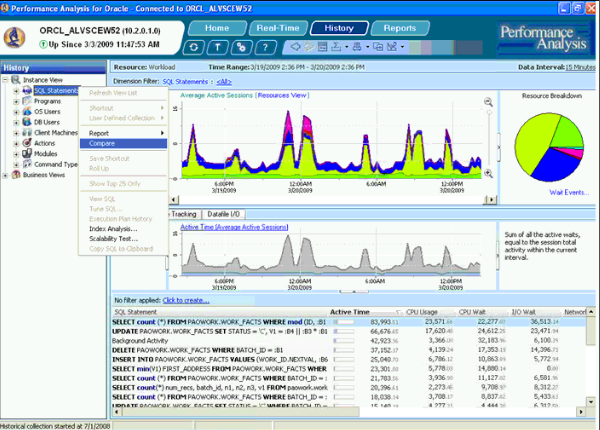How to Check Database Performance in Oracle
Oracle is a powerful database management system used by many organizations to store and retrieve vast amounts of data. However, as your database grows, it’s essential to monitor and improve its performance to ensure that it can handle the workload efficiently. In this article, we will explore some useful tips on how to check database performance in Oracle.
1. Use Oracle Enterprise Manager (EM)
One of the easiest ways to monitor database performance is through Oracle Enterprise Manager (EM). EM provides a user-friendly interface that allows you to view key performance metrics, such as CPU usage, memory usage, and disk I/O. You can also set up alerts to notify you of any performance issues in real-time.
2. Analyze AWR Reports
Another useful tool for monitoring database performance in Oracle is the Automatic Workload Repository (AWR). AWR automatically collects and stores performance data, which you can analyze using the AWR reports. These reports provide valuable insights into key performance indicators, such as top SQL queries, wait events, and system statistics.
3. Use SQL Tuning Advisor
The SQL Tuning Advisor is a powerful tool that can help you optimize SQL queries for better performance. By analyzing the SQL statements executed in your database, the SQL Tuning Advisor can recommend ways to improve query efficiency, such as adding indexes, restructuring queries, or using different access paths.
4. Monitor Wait Events
Wait events are indicators of performance bottlenecks in your database. By monitoring wait events, you can identify where your database is spending the most time and focus on optimizing those areas. Common wait events include latch contention, buffer busy waits, and log file sync waits.
5. Check Database Statistics
Regularly analyzing database statistics can help you identify trends and abnormalities in your database performance. You can use tools like Statspack or Oracle Diagnostics Pack to collect and analyze database statistics, such as buffer cache hit ratio, disk I/O throughput, and SQL execution times.
6. Implement Indexing and Partitioning
Optimizing database indexes and partitioning tables can significantly improve database performance. By creating indexes on frequently queried columns and partitioning large tables into smaller segments, you can reduce query response times and improve overall database efficiency.
7. Evaluate Hardware Resources
Lastly, ensure that your database server has sufficient hardware resources to handle the workload. Check the CPU, memory, and disk usage on your server to ensure that they are not being overloaded. You can also consider upgrading your hardware or adding more resources to improve database performance.
By following these tips and regularly monitoring your database performance, you can ensure that your Oracle database remains efficient and responsive to the needs of your organization.
